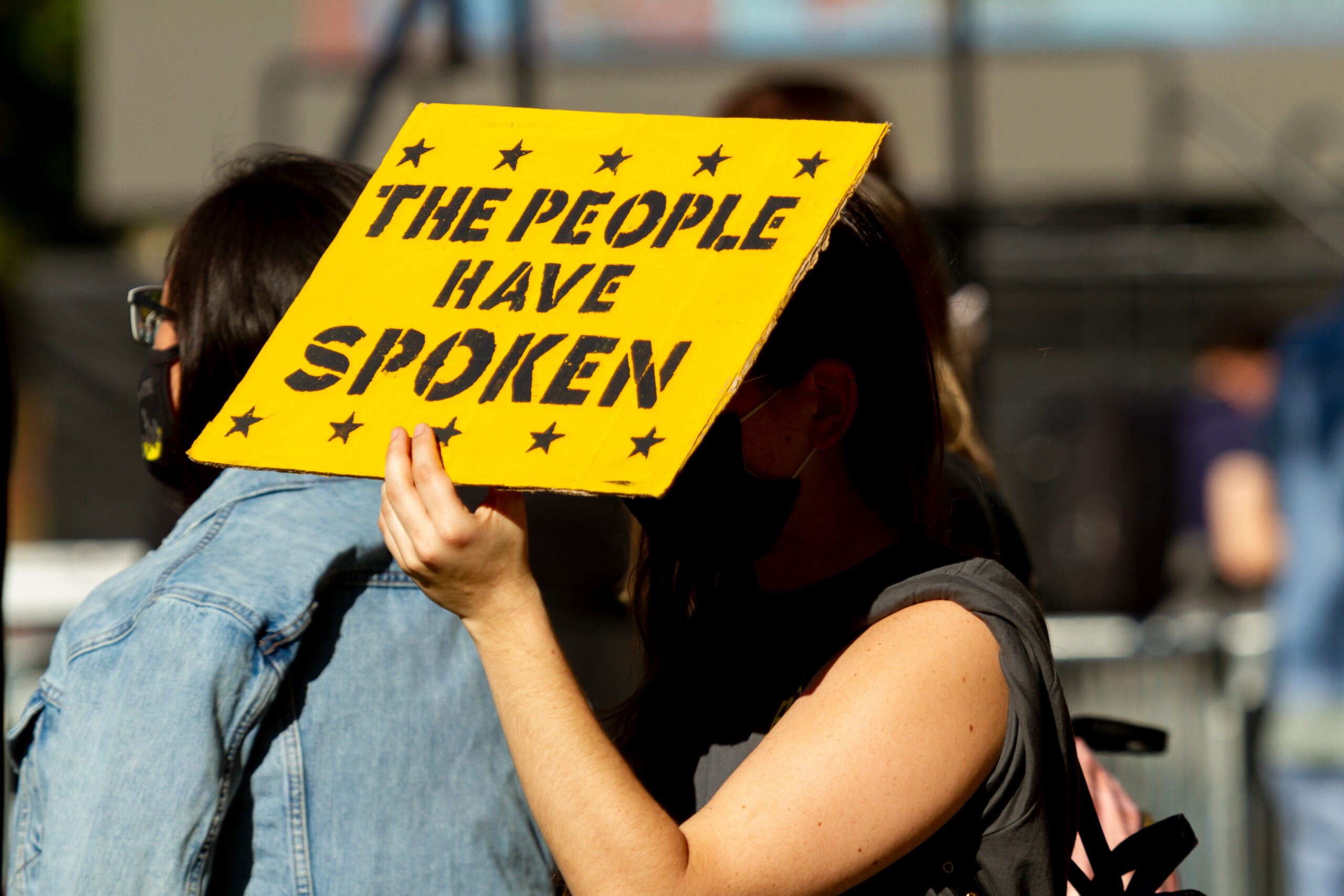In partnership with Search for Common Ground
We are days away from the 2024 U.S. presidential election. The United States faces a real threat of election violence—defined by research featured in this special issue as “coercive force, directed towards electoral actors and/or objects, that occurs in the context of electoral competition.”[1] It’s an almost unimaginable reality that, when we look closely at the research, has been brewing for many years. Of course, the attack on the U.S. Capitol on January 7, 2021, and abject denial of wrong-doing by then President Trump, is a significant flashpoint. But January 7 was no random event. The factors driving the risk of election violence in the U.S. are much more long term, deeply engrained, and systematic. In this moment, we are witnessing high levels of toxic polarization, made more dangerous by its accompaniment with widespread militarism, wherein violence is heralded as the solution to conflict. We do not believe it has to be this way.
This context has prompted us to think about how we can contribute to the effort to prevent election violence in the U.S. What appears in this special issue is the outcome of our efforts to make the research on election violence more accessible and understandable while building the connection to active work being done now to prevent violence.
This special issue includes two summaries of recent academic research studies assessing the risk of election violence in the U.S. Support for Political Violence in the United States, highlighting recent work by Armaly and Enders, identifies the predictors of those who are likely to support violence and how local community-driven initiatives that promote inclusivity and address systemic grievances can help reduce feelings of victimhood and lessen intergroup hostility. The Effects of Political Polarization on Political Violence in the U.S. and Other Democracies, on Piazza’s recent research, reveals that higher levels of polarization are related to greater support for and higher likelihood of political violence. An antidote to these trends toward violence is the development of strong cross-cutting relationships with people who come from different ideological perspectives, in hopes of cultivating a more resilient national community.
In addition to the summaries of recent academic work, we provide two literature reviews to take a look at the state-of-the-research on the following questions: (1) What drives election violence? and (2) What are the wider effects of election violence? In the final section—Lessons from Practice: What Can Prevent Election Violence?—we feature work from our friends and colleagues at Search for Common Ground. They provide numerous examples of what has worked to prevent election violence and how to counter toxic polarization in elections around the world, while drawing key lessons and insights for the U.S. context.
- Forward from Search for Common Ground
- Research Analyses
- Literature Reviews
- Lessons from Practice: What Can Prevent Election Violence?
Footnotes:
[1] Birch, S., & Muchlinski, D. (2017). The dataset of countries at risk of electoral violence. Terrorism and Political Violence, 32(2), 217–236. https://doi.org/10.1080/09546553.2017.1364636
Photo Credit: Grandbrothers

